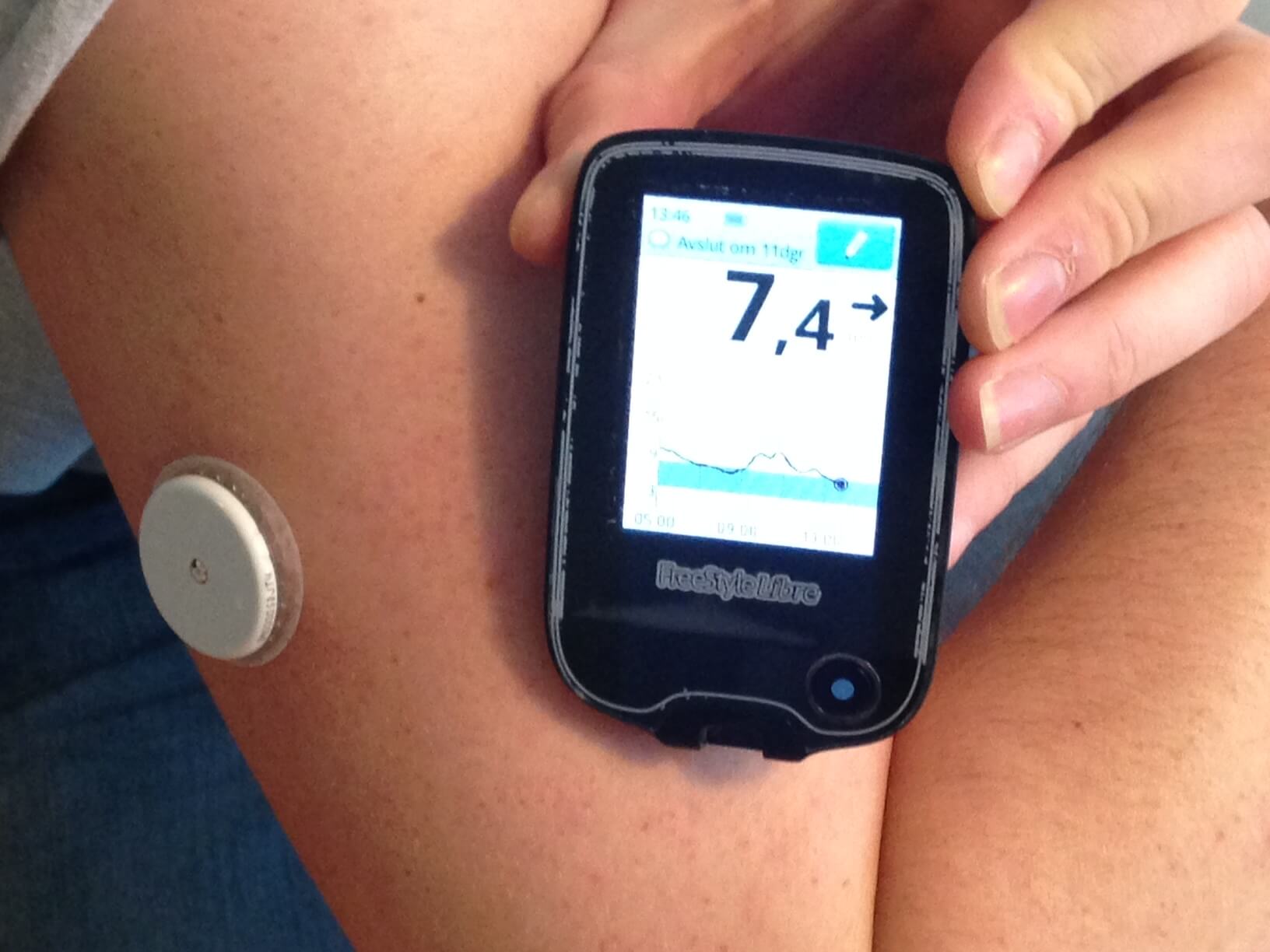Swimming is not just a sport or a hobby; for many, it’s an integral part of life. Whether it’s a refreshing dip on a hot summer day, rigorous laps for fitness, or a playful splash with loved ones, the water calls to us.
But for individuals with diabetes, this seemingly simple pleasure brings forth a myriad of questions and concerns, especially when equipped with a Continuous Glucose Monitor (CGM). Can you still swim with a GCM attached?

Yes, you can swim with a Continuous Glucose Monitor attached. Most CGM devices today are designed to withstand moisture and short durations in water. However, the exact specifications can differ between brands and models.
In this article, we will dive deeper into the intricacies of swimming with a CGM. From understanding its design to practical tips for ensuring it remains functional and adhered, we’ll address all the concerns you might have before taking that next plunge.
How long can I be submerged in water with my CGM?
The allowed time varies among different CGM brands and models. Typically, CGMs can handle up to 30 minutes submerged at a depth of up to 1 meter (3.3 feet). However, some newer models might offer longer submersion times or greater depths.
Always consult the user manual or the manufacturer’s guidelines before submerging your CGM. Currently, there are only two waterproof CGMs: the Freestyle Libre 2 and Dexcom G6.
Swimming with Freestyle Libre 2
From the Freestyle Libre product page: “Sensor is water-resistant in up to 1 meter (3 feet) of water. Do not immerse longer than 30 minutes. Not to be used above 10,000 feet.”
Swimming with Dexcom G6
From the Dexcom FAQ page: “The Dexcom G6 sensor and transmitter are water-resistant and may be submerged under eight feet of water for up to 24 hours without failure when properly installed. However, for the sensor to be water-resistant, the transmitter must be installed properly.”
Will chlorine or saltwater damage my CGM or affect its accuracy?
Chlorine and saltwater may not necessarily damage the CGM sensor or transmitter, but they could potentially impact the adhesive’s ability to stick, leading to the device peeling off prematurely. Over prolonged exposure, chlorine might affect the plastic or electronic components.
There’s limited data suggesting these elements directly impact the CGM’s accuracy, but it’s always best to rinse off after swimming and to check your glucose levels with a fingerstick test if you’re unsure about the CGM’s readings.
Does the temperature of the water affect the CGM’s function?
Extreme temperatures can potentially affect the functioning of your CGM. Very cold water might temporarily affect the sensor’s readings, and very hot water (like in hot tubs) could affect the adhesive or the device’s electronics over prolonged exposure. It’s best to avoid extreme temperatures or limit exposure when wearing a CGM.
Is the adhesive on the CGM waterproof?
Most CGM adhesives are water-resistant but not fully waterproof. Over time, water exposure, especially combined with physical activity, can weaken the adhesive, making the CGM more likely to come off.
How do I protect my CGM sensor from coming off while swimming or engaging in water sports?
To protect your CGM sensor from coming off, consider:
- Applying a waterproof patch or dressing over the sensor.
- Using medical-grade adhesive sprays or barrier wipes before applying the sensor.
- Avoiding direct jet streams in pools or showers on the sensor area.
- Patting the device gently after getting out of water instead of rubbing.
If my CGM gets wet, will it still provide accurate readings?
Most CGMs can still provide accurate readings after getting wet, as they’re designed to handle moisture. However, if the device is submerged beyond its recommended limits or if water gets inside the transmitter, the readings might be compromised. If you suspect this, compare the CGM readings with a fingerstick test.
Should I calibrate my CGM before or after swimming?
If your CGM requires calibration, it’s a good idea to calibrate it before swimming. After swimming, you might want to wait until your blood sugar stabilizes, as exercise can impact glucose levels, leading to discrepancies between CGM and fingerstick measurements.
How soon after placing a new CGM sensor can I swim?
Typically, you can swim shortly after applying a new CGM sensor, but it’s essential to ensure that the adhesive has fully bonded to your skin. Waiting for an hour or two might be a safe bet, but consult your device’s guidelines for specific recommendations.
Do I need to remove the transmitter from the sensor while swimming?
In most cases, you don’t need to remove the transmitter from the sensor while swimming. The transmitter and sensor are designed to be water-resistant together. However, always check your specific device’s guidelines.
How do I dry my CGM after coming out of the water?
Pat the CGM gently with a soft towel. Avoid rubbing or applying direct force, as this might weaken the adhesive or damage the device. Ensure the area around the CGM is dry to maintain the adhesive’s grip.
What should I do if the CGM sensor falls off during swimming?
If your CGM sensor falls off:
- Clean and dry the area where you’ll place the new sensor.
- Apply a new sensor following the manufacturer’s guidelines.
- Dispose of the old sensor properly.
- If you don’t have a spare sensor with you, monitor your glucose levels manually until you can replace it.
Remember, always consult the manufacturer’s guidelines or your healthcare provider for specifics about your CGM and its capabilities.
Additional Sources:
- https://www.medtronicdiabetes.com/loop-blog/4-faqs-about-water-activities/
- https://www.hcd.com/need-medical-supplies/what-happens-if-my-cgm-device-gets-wet/
- https://www.verywellhealth.com/continuous-glucose-monitoring-the-arrival-of-dexcom-5-3289566
- https://www.nutrisense.io/blog/swimming-with-a-cgm
Photo Credit: Sjö, CC BY-SA 4.0
